For over a decade, I have been using Leica cameras, and one thing is clear—nothing beats a Leica M camera with a true Leica M-mount lens. The detail, sharpness, light handling, and bokeh are simply unmatched. These cameras are built to last, and they have helped me create some of my most cherished images, both in digital and film photography.
But my journey into Leica photography wasn’t immediate. It took time, practice, and a shift in mindset to fully appreciate what makes Leica cameras unique. If you’re considering Leica or wondering whether it’s worth the investment, let me take you through my experience—from my first Leica to my current lineup of the best Leica lenses.
After 10 years of using Leica, I can say with absolute confidence: there is nothing else like it. Leica cameras are more than just tools—they are instruments of artistic expression, designed for photographers who want to be truly connected to their craft.
Unlike modern digital cameras, which are loaded with autofocus, face detection, and endless menus, Leica strips away the distractions, leaving you with nothing but the essentials: composition, exposure, and focus. It forces you to slow down, think, and truly engage with your subject—something no other brand encourages in the same way.


Here’s why Leica is the best camera system in the world
Discovering Leica: The Beginning – A Shift in Perspective
My introduction to Leica started with the Leica D-Lux 109, a compact camera that first exposed me to the Leica way of shooting. At the time, I was still deeply invested in the world of DSLRs from Canon and Nikon—systems I had built my photography career around.
In 2012, I bought the Canon EOS 6D, a fantastic full-frame DSLR that served me well. But by 2015, the writing was on the wall: DSLR technology was dying. Mirrorless cameras were emerging as the future, and major manufacturers like Canon and Nikon began shifting their focus to new mirrorless lens mounts.
At first, I ignored the trend. I had spent tens of thousands of dollars on DSLR bodies and lenses, trusting the promise that lenses were for life. I upgraded camera bodies every few years, but I relied on my lenses to last across multiple generations of cameras. That was the agreement, unspoken but understood.
But with the rise of mirrorless cameras, Canon introduced the RF mount, Nikon launched the Z mount, and suddenly, my trusted EF and F-mount lenses were no longer part of the future.


The Betrayal: When Brands Rendered Their Own Gear Obsolete
It wasn’t just that new mounts existed—it was that DSLR lens development stopped almost overnight. New lenses would only be made for mirrorless. Worse, the DSLR-to-mirrorless adapters were nothing more than a stopgap measure, an admission that old lenses were no longer part of the plan.
This realization felt like a betrayal. I had trusted these brands, and in return, they had devalued my investments. My collection of Canon L-series lenses, Nikon primes, and expensive zooms—all of which had been carefully acquired over years—were now relics of a discontinued system.
That’s when I started considering Leica.
Making the Leap: My First Leica M Camera
At the time, I had some extra cash from a successful home sale, and I faced a decision: Invest in a Sony mirrorless system or take a risk with Leica? I managed to test a Leica M240 with a 50mm Summarit f/2.4 and a 28mm Elmarit f/2.8. At first, it felt frustrating. The manual focus, lack of autofocus tracking, and fixed focal lengths were a complete shift from what I was used to.
Using a Leica M Rangefinder is different to a DSLR, in a good way
Then, it hit me: I was using the Leica M like a DSLR. I wasn’t utilizing its rangefinder focusing system as intended.
Determined to master the Leica M camera, I purchased a Leica M-P Type 240 Safari Edition with a 35mm Summicron f/2.0. Just one lens, and that’s all I needed. I forced myself to use only the 35mm focal length, training my eye to see compositions differently.


Leica: A Brand That Respects Its History…and its users
Unlike Canon, Nikon, and Sony, Leica does not abandon its users. The M-mount has remained unchanged since 1954, and that means something no other brand can offer:
- I can take a 1950s Leica M lens and mount it directly onto my modern Leica M11, and it will work perfectly—no adapters, no compromises.
- I can buy a brand-new Leica M lens today and mount it on a 1954 Leica M3, and it will function as if it was made for it.
This level of backward and forward compatibility is unheard of in modern photography. Every other major manufacturer treats older gear as disposable, forcing photographers into costly upgrades and system switches. Leica, on the other hand, respects its legacy and its users.


That realization made me rethink my entire approach to photography. Did I want to keep investing in disposable technology, or did I want to invest in a system that was built to last?
With Leica, I knew I wasn’t just buying a camera—I was joining a photographic lineage that spans generations.
The Evolution: Leica M10, Leica M11 & Beyond – The Pinnacle of Digital Rangefinders
By 2018, I made a significant leap forward in my Leica journey, transitioning from the Leica M240 to the Leica M10. At the time, I had been using the M240 for three years, and while it was an excellent camera, it had its quirks and limitations. The thicker body, the slightly sluggish sensor performance, and the larger battery made it feel less like a classic Leica M and more like a digital adaptation of the rangefinder concept.
When the Leica M10 was announced, it felt like Leica had finally perfected the balance between classic and modern. This camera was a game-changer for digital Leica users, and for good reason:
- A Slimmer, More Traditional Leica Body The M10 returned to the classic film Leica dimensions, making it feel more like an M3 or an MP in the hands. The bulk of the M240 was gone.
- An Intuitive Control Layout The addition of a dedicated ISO dial on the top plate made manual exposure control faster and more in line with Leica’s minimalist approach. It removed the need to dive into menus.
- Improved Low-Light Performance With a base ISO of 100 and an expanded range up to ISO 50,000, the M10 was a serious improvement over the M240, particularly in low-light conditions.
- A More Refined EVF Experience While I mostly shoot with the optical rangefinder, I occasionally use the Visoflex EVF for framing difficult shots. The improved refresh rate and clarity made it a pleasure to use.


The M10 felt like the ultimate realization of the digital rangefinder concept—slim, pure, and distraction-free. It encouraged me to shoot more deliberately while delivering stunning color and detail.
The Arrival of the Leica M11 – A New Standard in Digital Rangefinders
By 2022, Leica had once again pushed the boundaries of what a digital rangefinder could be, and I was ready to upgrade to the Leica M11. As soon as the M11 was announced, I placed my order immediately, and within three days, I had one of the first units in Australia.
The Leica M11 took everything great about the M10 and refined it even further, making it arguably the most versatile and powerful M-camera ever made.


Key Improvements in the Leica M11:
- Massive 60-Megapixel Full-Frame Sensor The biggest upgrade was the high-resolution sensor, a huge jump from the 24MP in the M10. This meant unprecedented detail, giving me the ability to crop images without sacrificing quality.
- Triple Resolution RAW Files A first for any camera, the M11 allows you to shoot in 60MP, 36MP, or 18MP RAW formats, meaning you can prioritize resolution, file size, or low-light performance based on your needs.
- Improved Dynamic Range and ISO Handling The base ISO of 64 delivered stunning color accuracy, deeper shadows, and greater highlight retention compared to previous models.
- Massive Battery Life Improvement The M11 introduced a 64% larger battery, which, combined with the power-efficient Maestro III processor, doubled the battery life compared to the M10. I could easily shoot all day on a single charge.
- New USB-C Port for Charging and Data Transfer A modern touch that Leica purists may have debated, but I found it incredibly useful. I could charge the camera on the go, eliminating the need for bulky external chargers.
- No More Baseplate Hassle The iconic removable baseplate was gone. While purists may have missed it, the new battery system made swapping batteries and SD cards far more practical and efficient.
- Even Fewer Buttons, Even More Simplicity Leica took minimalism even further by reducing the number of buttons while maintaining complete manual control.
Why the M11 Is My Ultimate Digital Leica
The Leica M11 is the best digital rangefinder ever made—hands down. It retains the spirit of the original Leica M philosophy while integrating the latest technological advancements. Unlike many modern cameras that overwhelm users with features, the M11 remains pure and focused on the essentials.
Since getting my Leica M11, I’ve found myself using the rear screen even less, relying purely on muscle memory, experience, and intuition to capture the shot. It has reinforced the core reason why I love Leica photography—it’s not about specs or shooting speed; it’s about the process, the craft, and the artistry.
While my Leica MP (film) remains my emotional favorite, the M11 is my ultimate digital camera—a perfect blend of heritage and innovation.


Leica Prioritizes Art, Not Algorithms
When I started using Leica, my entire approach to photography changed. I stopped worrying about histograms, sharpness charts, and megapixel comparisons. I stopped zooming in to 400% in Lightroom to analyze whether a lens was fractionally sharper than another. Instead, I started focusing on what truly matters:
- How does this image make me feel?
- Does it tell a story?
- Does it have emotion, energy, and depth?
That’s the difference between Leica photographers and the pixel peepers who spend more time reading spec sheets than actually taking photos.
Mastering Leica: The Zone Focusing Revelation
Over time, I realized one of the biggest secrets of Leica photography: Zone Focusing with your Leica M. Instead of relying on autofocus, I trained myself to pre-set focus distances and adjust my aperture manually. Eventually, my focusing became faster than traditional autofocus—something I never thought possible.
This was a game-changer.
- I learned to estimate distances instinctively.
- I adjusted my exposure settings manually before even lifting the camera.
- I stopped obsessing over the histogram and focused on capturing emotion.
Suddenly, my photography wasn’t just about sharpness and technical perfection—it was about artistic expression.
With Leica, I Learned:
Perfection is overrated – The best images aren’t always the sharpest, cleanest, or most technically precise, but they are the ones that evoke emotion. Some of the greatest photographs ever taken would be considered “flawed” by modern standards—grainy, high contrast, imperfect—but they tell stories that resonate for decades.
Manual focus makes you more intentional – Autofocus has made photographers lazy. Instead of anticipating the shot, instead of focusing on composition, most photographers today just let the camera do the work. With Leica, I was forced to think ahead, to slow down, to be deliberate in every frame. And that’s why my photography improved.
Imperfections add character – A shot that’s slightly misfocused? A bit of film grain? Some overexposed highlights? These are not flaws—they are character. They make an image feel alive. Digital photography has made people afraid of imperfection, but the truth is, perfection is boring. A perfectly sharp, perfectly clean image with perfect exposure might be technically correct, but it is also soulless.
This is why I will never go back to modern, spec-driven photography. With a Leica, I am no longer a technician measuring sharpness and dynamic range—I am an artist capturing moments.
The Transition to Film: Leica MP
By October 2016, I spotted a brand new Leica MP in the window of PhotoCo, a camera store in Adelaide. It was $5,999, and I hesitated—but not for long.
Owning a Leica MP meant diving into film photography, and I instantly fell in love with it. The fully mechanical operation, lack of an electronic meter, and the simplicity of the experience changed the way I approached photography.
With film, I applied the same principles I had learned with digital Leica cameras:
- Zone focusing and the Sunny 16 rule
- Choosing film stocks based on how they render light and contrast
- Embracing imperfections for a more artistic feel
To this day, my Leica MP remains my favorite camera.


The Best Leica Lenses: My Favorites
The Leica Lens Experience
Leica lenses are more than just tools—they define the way I see the world. Each lens has its own character, strengths, and artistic signature.
If I had to recommend just one Leica lens for beginners, it would be the 35mm Summilux f/1.4—the perfect blend of sharpness, versatility, and creative potential.
But in the end, it’s not just about the specs—it’s about how a Leica lens makes you feel when you shoot. That’s what makes Leica photography so special.


One of the greatest strengths of the Leica M system is its legendary lenses. Leica M-mount lenses are known for their exceptional sharpness, micro-contrast, rendering, and build quality. Over the years, I have carefully curated my collection of the best Leica lenses, each serving a specific artistic purpose. Whether it’s for street photography, portraiture, or low-light shooting, Leica’s glass has consistently exceeded my expectations.
Here’s a deeper look into my favorite Leica M lenses, how I use them, and why they stand out.
28mm Summilux f/1.4 – The Sharpest Wide-Angle Lens
The Leica 28mm Summilux f/1.4 ASPH is, without a doubt, the sharpest wide-angle lens I own. It balances ultra-high resolution, exceptional contrast, and dreamy bokeh, making it an incredible lens for street photography, documentary work, and environmental portraiture.








Why I Love It:
Unmatched Sharpness
At f/1.4, it’s already razor-sharp, and by f/2, it reaches near perfection. The amount of detail captured across the frame is astonishing.
Low-Light Performance
The fast f/1.4 aperture makes it a beast in low-light conditions, allowing me to shoot handheld at night without worry.
Beautiful Micro-Contrast
Leica lenses are known for their three-dimensional rendering, and this lens delivers an almost holographic look to images.
Multi-Layered Storytelling
The wide 28mm field of view allows me to frame complex scenes with depth while still achieving background separation.
Best Uses:
Street photography
Captures wide urban environments while keeping subjects well-defined.
Environmental portraiture
Frames a subject with plenty of context and background storytelling.
Low-light cityscapes
Perfect for handheld night photography without needing a tripod.
This lens is one of the best investments I have made in Leica M photography.
35mm Summilux f/1.4 – The Perfect All-Rounder
If I could only own one Leica lens, it would be the 35mm Summilux f/1.4 ASPH. It is the ultimate everyday lens, striking the perfect balance between subject isolation and environmental storytelling.


Why I Love It:
The Most Versatile Leica Lens
The 35mm focal length is wide enough for landscapes and street scenes but can still provide intimate subject focus.
Gorgeous Bokeh
Unlike most wide-angle lenses, this Summilux delivers a creamy, smooth background blur that makes subjects pop.
Superb Low-Light Capability
The f/1.4 aperture lets me shoot in dimly lit environments while retainingincredible detail.
Compact Yet Powerful
Despite its fast aperture, the 35mm Summilux is small and lightweight, making it the ideal everyday lens.
Best Uses:
Street photography
Perfect for both candid shots and architectural compositions.
Documentary work
Frames subjects while maintaining a strong sense of place.
Portraits
Offers a natural perspective with a stunning shallow depth of field.
Low-light shooting
A go-to lens for shooting in dim interiors or night scenes.
The 35mm Summilux f/1.4 is the heart of my Leica kit—it’s the lens that rarely leaves my camera.
50mm Summilux f/1.4 – The Classic Perspective
The Leica 50mm Summilux f/1.4 ASPH is legendary, often regarded as one of the greatest 50mm lenses ever made. It offers an ideal focal length for portraits, street photography, and artistic compositions.


Why I Love It:
True-to-Life Perspective
The 50mm focal length closely matches the human eye’s natural field of view, making it great for storytelling.
Unbelievable Sharpness
Wide open at f/1.4, the lens is incredibly sharp, and by f/2, it becomes flawless.
Dreamy, Cinematic Rendering
The background blur is buttery smooth, giving portraits a luxurious, professional look.
Fantastic Low-Light Capabilities
Ideal for shooting in low light without compromising on image quality.


Best Uses:
Portraits
Produces intimate, cinematic-looking portraits with beautiful bokeh.
Fine-art photography
The combination of sharpness and rendering makes it great for artistic compositions.
Street photography (when I want subject isolation)
While I personally prefer 35mm for street work, the 50mm Summilux allows for greater compression and background separation.
Even though I don’t use my 50mm Summilux as often as my 35mm, it’s irreplaceable when I need it.
28mm Summaron f/5.6 – Vintage Charm
The Leica 28mm Summaron f/5.6 is a special lens in my collection—not because of its speed or technical excellence, but because of its unique character. Originally designed in the 1950s, this lens was reissued in 2024, offering an authentic vintage rendering with modern precision.


Why I Love It:
Unique Vintage Look
The soft contrast, glow, and subtle vignetting give images an authentic film-era feel.
Ultra-Compact Design
The lens is tiny when mounted on my Leica M11 or Leica MA, it makes the camera feel almost invisible.
Perfect for Zone Focusing
With its fixed f/5.6 aperture, I use it exclusively for zone focusing, making it great for quick, unobtrusive shooting.
Manual Simplicity
There are no electronics, no distractions—just pure, old-school rangefinder photography.
Best Uses:
Street photography
A fantastic lens for stealthy, candid shots in a classic documentary style.
Film photography
It pairs beautifully with the Leica MA, creating a timeless aesthetic.
Travel & Walkaround Lens
Since it’s so small and light, it’s perfect for everyday shooting.
While the 28mm Summaron f/5.6 isn’t the lens I reach for when I need absolute sharpness, it’s one of the most fun and character-filled lenses I own. It reminds me why I fell in love with Leica photography in the first place.
Leica Separates the True Photographers From the Gear Addicts
Photography has never been about who has the biggest sensor, the most megapixels, or the fastest autofocus. That’s just marketing. The greatest photographers in history didn’t need computational photography, eye-tracking autofocus, or image stabilization—they needed vision, patience, and the ability to see the world differently.
That’s what Leica understands.
This is why Leica cameras aren’t for everyone—and that’s a good thing. If you care about specs more than storytelling, technical precision more than creativity, and software tricks more than raw skill, Leica isn’t for you.


But if you want to truly see the world differently, slow down, and create art instead of just taking photos, then Leica will change everything for you.
With Leica, you don’t just shoot—you create.
Visiting Leica World at Leitz Park, Wetzlar
In June 2023, I had the privilege of visiting Leica World at Leitz Park, Wetzlar—the headquarters and museum of Leica. I got a VIP tour, hands-on experience with Leica technicians, and even met famous Leica photographers like Thorsten von Overgaard.


Leica is one of the only camera manufacturers that welcomes visitors to walk into their factory, see their processes, and explore their history. They welcome their customers to come and visit them gladly, anytime.
Why Leica is the Ultimate Camera System
After 10 years of using Leica, I can say with absolute confidence: there is nothing else like it. Leica cameras are more than just tools—they are instruments of artistic expression, designed for photographers who want to be truly connected to their craft.
Unlike modern digital cameras, which are loaded with autofocus, face detection, and endless menus, Leica strips away the distractions, leaving you with nothing but the essentials: composition, exposure, and focus. It forces you to slow down, think, and truly engage with your subject—something no other brand encourages in the same way.
Here’s why Leica is the best camera system in the world:
1. Leica M Cameras Are Built to Last
Most digital cameras today are disposable technology—built to be replaced every two to three years. New models flood the market, making older ones feel outdated within months. Manufacturers introduce new lens mounts, rendering existing lenses obsolete, and forcing users to buy into a new system just to stay up to date.
Leica is different.
Mechanical Durability
A Leica M camera is not just a tool; it’s a precision-engineered machine, designed to last a lifetime. I have used my Leica in the rain, on dusty streets, in extreme heat, and it has never failed me. Even older film Leicas from the 1950s still function flawlessly today.
Timeless Design
Unlike other brands that constantly chase new gimmicks and design changes, Leica has kept the M-series true to its roots. The Leica M11, though a 2022 camera, looks and feels almost identical to the Leica M3 from 1954.
Mechanical Simplicity
There are no fragile electronic gimmicks inside a Leica M. The shutter is mechanical, the controls are physical dials, and everything is designed for long-term reliability. While other cameras suffer from malfunctions and sensor failures, Leica cameras are serviceable for decades.
When you buy a Leica M, you’re not just buying a camera—you’re buying a lifetime companion.
2. Leica Lenses Are the Best in the World
Leica M lenses are optical masterpieces, engineered with an obsessive attention to detail that no other brand matches. Unlike mass-produced autofocus lenses, Leica’s glass is built to the highest standards, with every lens hand-assembled and individually tested.
Unmatched Sharpness and Micro-Contrast – Leica lenses don’t just capture sharp images—they produce an almost holographic three-dimensionality, thanks to their legendary micro-contrast.
Superb Low-Light Performance – The Summilux and Noctilux series allow me to shoot in near darkness, without relying on artificial lighting or high ISO.
Character That No Other Lens Can Reproduce – Many modern lenses are technically perfect but soulless. Leica lenses, on the other hand, have a signature look that makes images feel alive.
Future-Proof Compatibility – A 1950s Leica M lens works flawlessly on the latest digital M cameras. This backward compatibility ensures that Leica lenses never become obsolete.
While other brands force you to buy new lenses with every system update, Leica respects your investment—your lenses remain just as valuable decades later.
3. Leica Photography is About More Than Just Technical Perfection
Most camera manufacturers focus on megapixels, autofocus speed, and AI-enhanced features. Leica is different—it prioritizes artistic vision over technical perfection.
When I started using Leica, my approach to photography changed completely. I stopped worrying about histograms and pixel peeping. Instead, I started paying attention to emotion, light, and storytelling.
With Leica, I learned:
Perfection is overrated
The best images aren’t always the sharpest, but the ones that evoke emotion.
Manual focus with a Leica M lens makes you more intentional
It forces you to slow down and anticipate the shot.
Imperfections add character
Slight misfocus, film grain, and overexposed highlights can all enhance an image rather than ruin it.
With a Leica, I am no longer a technician measuring sharpness—I am an artist capturing moments.
4. Leica Forces You to Become a Better Photographer
In today’s world, cameras are designed to make photography easier—face detection, autofocus tracking, auto-exposure. While these tools are great for convenience, they also create lazy photographers.
Leica forces you to work for your shot—and that’s what makes you better.
You learn exposure by feel
Instead of relying on a camera’s metering, I’ve learned to read light naturally, setting my exposure without even thinking.
You master zone focusing
I can now pre-focus instinctively, snapping photos faster than any autofocus system.
You compose with intent
With a Leica, every shot is deliberate, making me think about framing and storytelling in a way I never did with DSLRs.
The result? My photography has improved dramatically. I don’t just capture moments—I craft them.
Why is Leica so expensive?
Leica cameras and lenses are expensive for a reason—they are built differently. Unlike mass-produced consumer cameras, every Leica M camera is hand-assembled in Germany with meticulous craftsmanship, using only the finest materials. The Leica M lenses are individually tested to ensure absolute optical perfection. These aren’t just products; they are precision-engineered instruments designed to last for decades, not just a few years. The price reflects not just the exceptional build quality but also the heritage, craftsmanship, and timeless design that ensures a Leica is never obsolete. Unlike other brands that force users into constant upgrades and system changes, a Leica M is an investment in a lifetime of photography. You pay for excellence, durability, and a camera that will serve you for decades. And when you hold a Leica in your hands, feel the weight of its craftsmanship, and see the images it produces, you’ll realize—it is absolutely worth it.


Why You Should Switch to Leica, namely a Leica M
If you’re considering switching to Leica, my advice is simple: do it.
- It will change the way you see the world.
- It will force you to become a better photographer.
- It will make photography feel pure again.
Unlike other cameras that become obsolete in a few years, Leica cameras stay relevant for a lifetime. If you want a system that values craftsmanship, heritage, and artistic vision, there is no better choice than Leica.
Leica isn’t just a brand, it’s a way of seeing. It is a way of being a pure photographer.




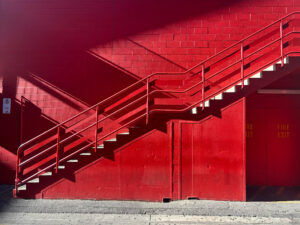








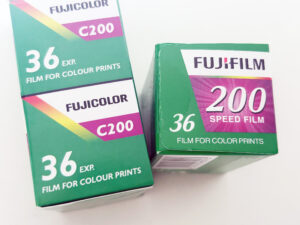






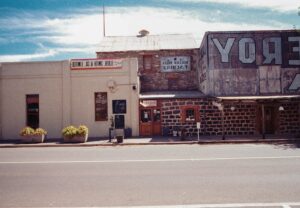















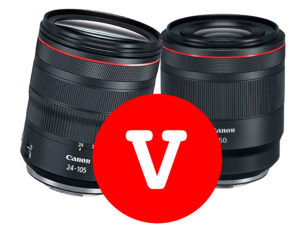

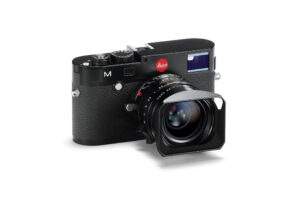






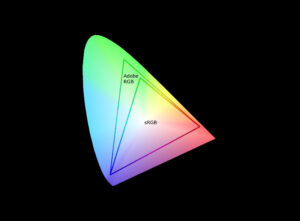









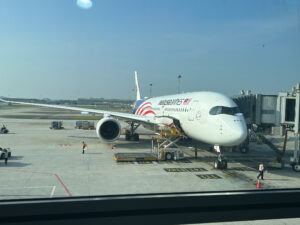
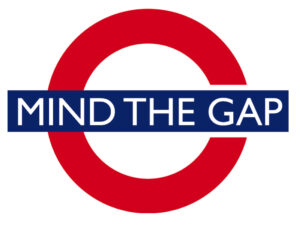















3 Responses
M240 is peak Leica digital, imo. The limitations are it’s power. The M10 is close, but it performs much like any modern camera in some ways. The M11 is a departure from classic Leica, absolutely. Fantastic camera? Of course; it’s still a Leica. But it now wants to be a modern digital with a rangefinder attached. Absurd resolution that’s constantly cited as helpful for cropping- which is a thought process and working method utterly at odds with the Leica mainstay of moving your body and zone focus. Metering off the sensor, abandoning the classic fantastic shutter as grey card approach. Hyper ISO performance which lets us off the hook for exposing creativity in challenging situations. DNG files which- like the M10- prioritize editing over the classic Leica color science. The list goes on. I agree with everything you say about Leica and process, but there is a cognitive dissonance in praising the heritage and the infinite M mount… And then upgrading bodies constantly and praising how they improving upon the prior generations. In reality, those prior generations captured the true Leica experience.
I agree the Leica M240 was the last where we got to enjoy Leica colour science to its full potential. I used to enjoy the M240’s film/picture profiles, particularly the smooth colour film style and it was a good reason to just shoot JPEG on the camera. The Typ240 was a more challenging and in many ways fun camera to shoot with. I also miss the option for red frame-lines on the M240. Metering, I’m agnostic, for my style of shooting and tend to more guess with the sunny 16 rule as oppose to use a meter. The dedicated ISO dial on the M10 and M11 was a big improvement for me. Thanks for your comment and providing insights.
I agree with what you say for the most part. I owned and worked professionally with a Leica M3 and M4- 2 and had lenses ranging from the 21 Super Angulon all the way to the heavy 135mm f2.8 Tele Elmarit with the goggle viewfinder attachment. I also owned a Leica Focomat enlarger. Yes they are great cameras. But I also owned Nikon’s F, F2, F3. The photographing experience was different. By how much would be difficult to explain right now. However, the Nikon’s ruled with their telephotos and rock solid reliability. The business of determining exposure,knowing your distances and using a Sekonic, Spectra, or Gossen light meter was a a given. My only thing is I never ever trusted zone focus as much as some people vdo. It doesn’t mean I didn’t use it, I did. But I always remembered that there is “always” a pint where a lens is really focused. Blow up enough pictures and you will know. In the end, the Leica M experience is unique. Their ads said: The Thinking Man’s camera; something many photographers are not doing. Instead they collect too much gear and count megapixels.